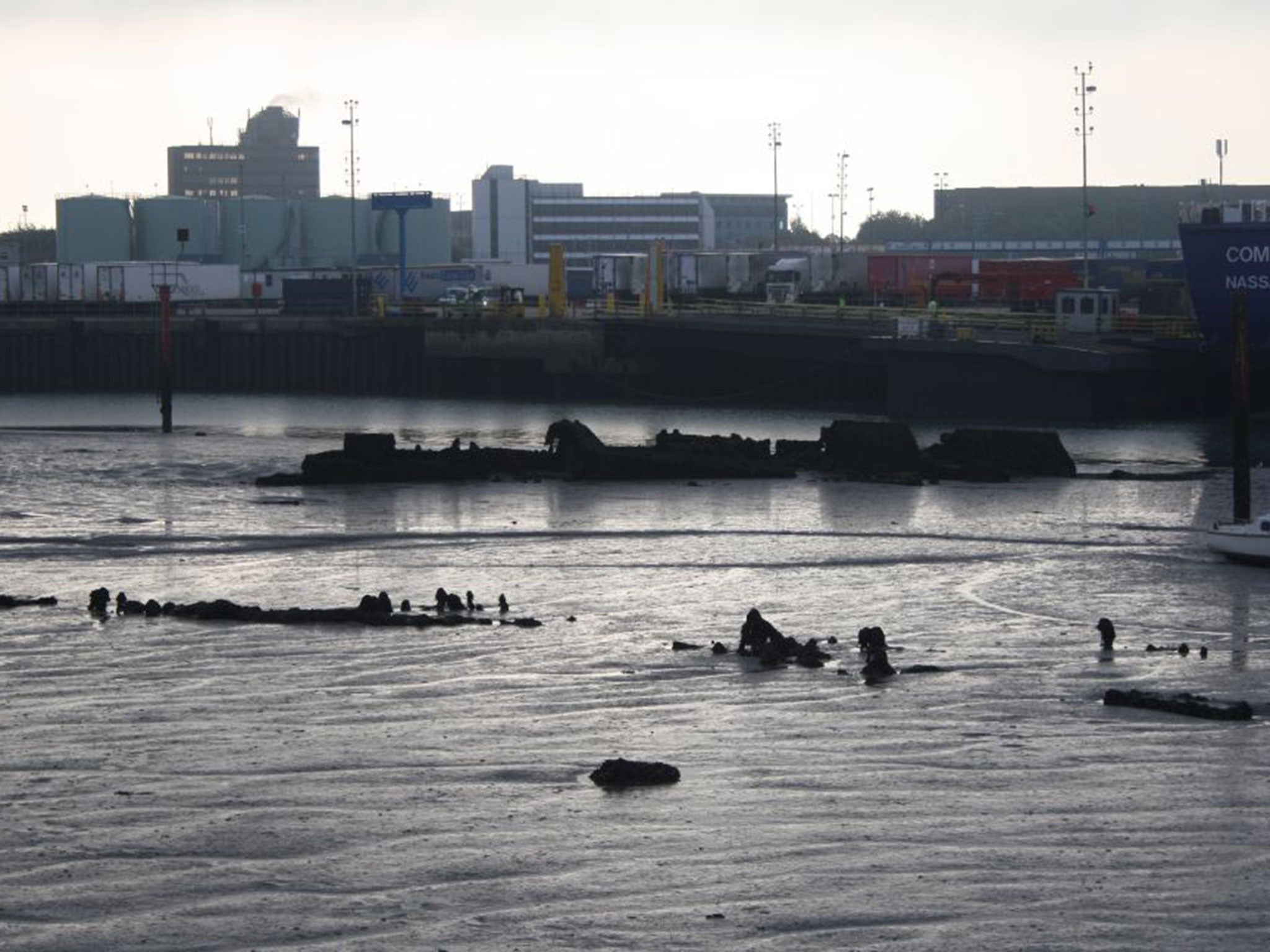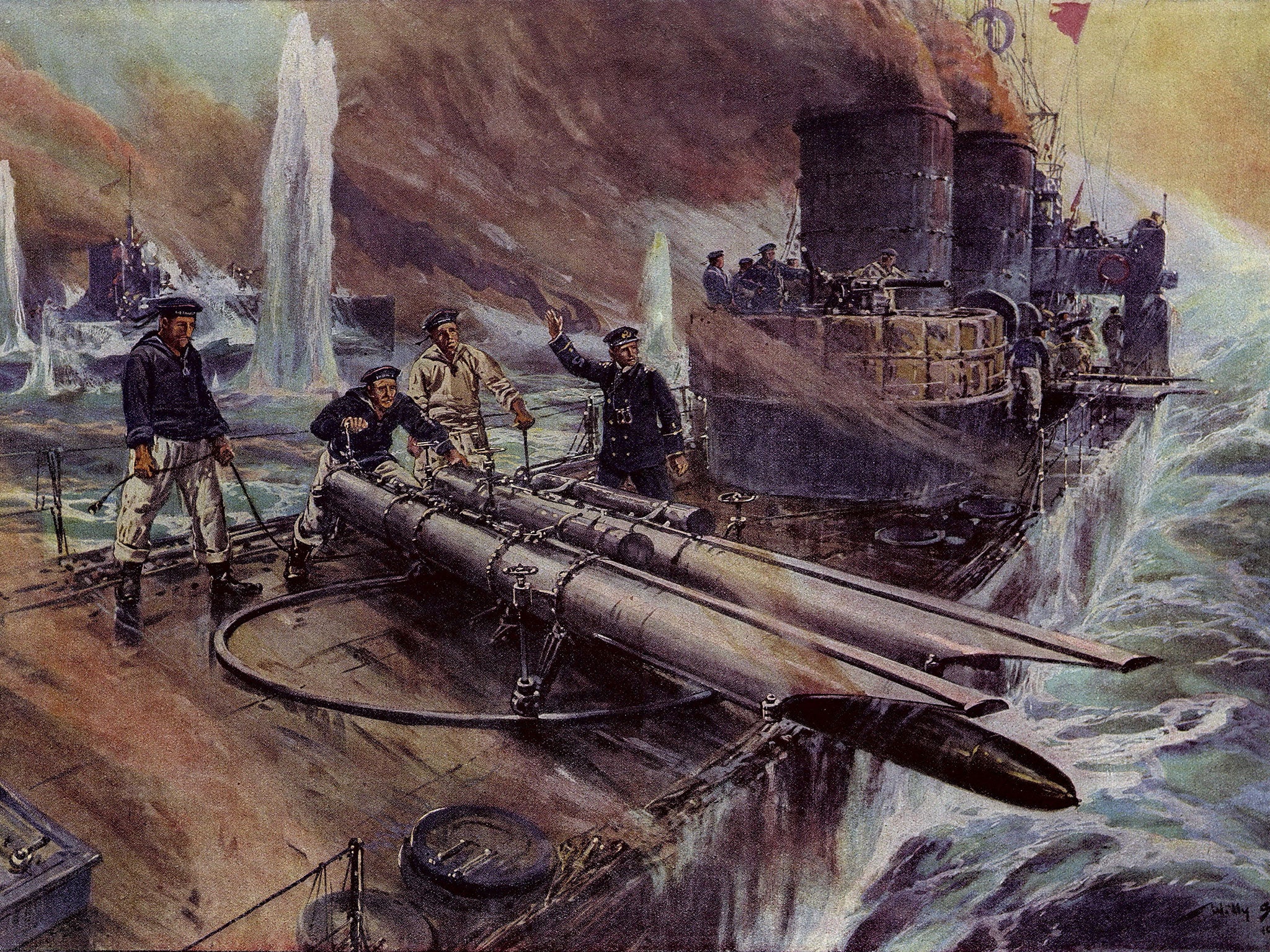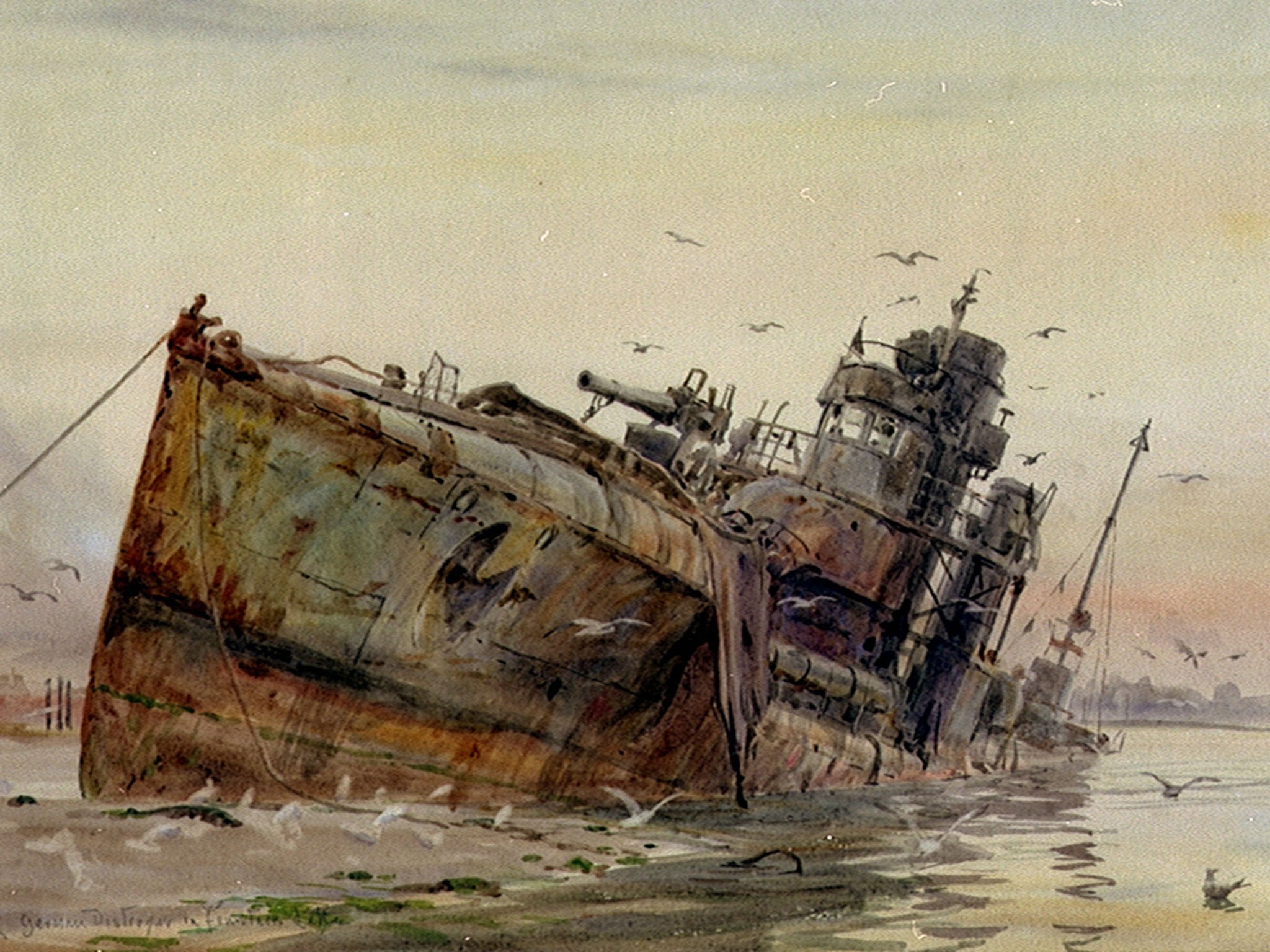German WWI warships rediscovered in Portsmouth Harbour after lying forgotten for decades
Exclusive: The destroyers are among the only Imperial German Navy vessels intermittently visible above water

Two long-lost First World War German warships have been rediscovered – forgotten for decades in Portsmouth Harbour.
Archaeologists found them by examining aerial photographs from the 1940s – and by then searching through local newspaper reports from the 1920s .
Researchers say that the two destroyers are among the very few surviving vessels from the Imperial German Navy that can still intermittently be seen above water anywhere in the world.
Archaeologists believe that the vessels are the V44 and the V82 (both launched in the German port of Kiel – in February 1915 and July 1916, respectively). The V44 is particularly significant from an historical perspective – because it played a crucial role in the strategically important escape of the German fleet after the key phase of the Battle of Jutland at the end of May 1916. It was one of the vessels which successfully used torpedoes to prevent the British pursuing and destroying the 93 ships that remained of Imperial Germany’s High Seas Fleet.
Next month, archaeologists from Britain’s Maritime Archaeology Trust, will carry out a detailed survey of the two vessels, which are only visible at extreme low tide, and even then very difficult to access because of highly hazardous quicksand-style mudflats. One of the warships is thought to still have its boilers and some other machinery intact.
Originally the two destroyers were among the 70 German warships which surrendered to the Royal Navy in November 1918 and were subsequently interned in Scapa Flow Harbour in the Orkneys. However, in June 1919, in violation of the Allied/German armistice agreement, those German naval personnel, still on-board their ships in Scapa Flow, hatched a plot to defiantly re-fly their battle ensigns and then scuttle their entire fleet. Much of the plan worked – for they succeeded in sinking the majority of their vessels (thus preventing the Royal Navy getting permanent possession of them). They failed in only two dozen cases, two of which were the V44 and the V82 – because Royal Navy officers managed to intervene on those vessels to prevent the Germans opening the bilge valves and flooding those particular ships.

The V44 and the V82 (and a third ship, a cruiser called the Nürnberg) were then taken to Portsmouth and subsequently used for naval ‘big gun’ target practice. The Nürnberg was sunk in the English Channel - while the two destroyers were deliberately run aground by the Royal Navy on tidal mudflats near Whale Island in the eastern part of Portsmouth Harbour.
In the early 1920s, thieves looted the two destroyers for loose scrap metal – and later in the same decade, both ships were sold for scrap. However, only parts of the vessels were removed by the scrap merchants. The substantial remnants – including much of the ships’ hulls – were then abandoned and rapidly forgotten. Eight decades then passed before they were rediscovered by the archaeologists.
However, local paintings from the 1920s, together with some archival sources, examined by the Maritime Archaeology Trust’s researchers, suggest that other First World War German vessels (possibly including a submarine) may also lie abandoned and possibly buried in mud nearby. An aerial drone survey will be used next month to help reveal details of what’s left of the two destroyers – and may also be used to try to locate any other missing German vessels. The new data will enable the archaeologists to create 3D models of the two destroyers.

The wrecks are in a restricted area owned and controlled by the Royal Navy.
"Our research demonstrates that there are still major relics from the First World War waiting to be discovered. These two German destroyers are important because of the significant role they played in trying to control the seas around Britain during the conflict," said Stephen Fisher, research officer for the Maritime Archaeology Trust's Forgotten Wrecks of the First World War project.
So far researchers engaged on the project have succeeded in recording 1100 First World War wrecks off England's south coast, of which around 700 are British (mostly merchant vessels) and 50 are German (mainly submarines). The remainder – mostly merchant ships - are from dozens of other countries. The great majority of the non-German ships recorded so far were sunk by German submarines.
The entire Forgotten Wrecks project is being funded by the Heritage Lottery Fund.
Join our commenting forum
Join thought-provoking conversations, follow other Independent readers and see their replies
Comments
Bookmark popover
Removed from bookmarks